English Heritage
|
With plenty of history, it is not suprising to find some outstanding English Heritage sites to visit in Norfolk |
|
An Introduction to English Heritage sites in Norfolk
|
When Neolithic humans were digging their flint mines in 3000BC, it was presumably beyond their wildest dreams that their handiwork would still be there, 5000 years later. It would be even more ludicrous to suggest that sightseers would visit every day. But that's exactly what has happened, and for that we have to thank English Heritage. The mine, known as Grime's Graves, is the earliest site in a portfolio that covers the Roman and Norman conquests, the Medieval era and beyond. These castles, churches and towers are often in a state of ruin, and would have long since disappeared without the care they now receive. Together they tell the story of how much Norfolk has - or hasn't - changed. |
10 Top English Heritage Sites in Norfolk
|
 |
North Elmham Chapel |
|
This site isnít the remains of one building, but of several. The first was a timber church, built by the Saxons between 650 and 750 AD. In the 11th century it became a Norman chapel, and in the 14th it was turned into a bishopís manor house. This last change was the most dramatic; the unpopular Bishop DeSpencer added a moat, walls and other fortifications. The current remains are a confusing mix of all these different identities. Windows and doorways sometimes point down dead ends, creating something of a labyrinth. |
|

Picture coming soon! |
| |
|
|
This village, in its entirety, is a relic of the Norman Conquest. First, they built a castle. Itís in ruins, but the earthworks suggest its past strength. Then they built a priory, which is in much better condition; in fact it's among England's best preserved monastic sites. But the Normans werenít done. They fortified the entire village. The walls were crowned on the northern side by the Bailey Gate, which is still standing. The castle, priory and gate, Castle Acre's trio of Norman buildings, powerfully convey just how irresistable that regime was. |
|
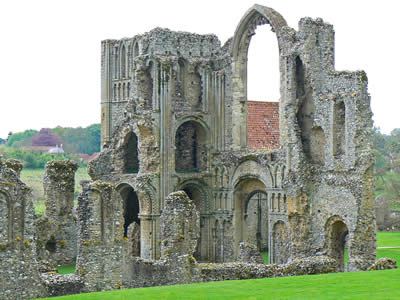 Click to view our Castle Acre picture tour
Click to view our Castle Acre picture tour |
| |
|
 |
Grime's Graves - Prehistoric Flint Mine |
|
In a small part of the Breckland heath, strange, unearthly indentations mark the ground. It was the perplexed Anglo Saxons that gave the place its name: Grimeís Graves, or the Devilís holes. Itís only relatively recently that we discovered the truth: that 5000 years ago, this was a flint mine. Each indentation marks a former excavation shaft. Visitors can climb down by ladder, to see the jet-black flint that the Neolithic miners turned into axes, long before metal came into use. |
|

Picture coming soon! |
| |
|
|
This riverside stronghold was designed very specifically for artillery weapons. Later it was a tollhouse, then a dungeon. All of these uses took advantage of the tower's imposing appearance, but in truth this wasn't an especially reliable defence. You can still see the cannon damage it sustained during the peasant's revolt of 1549. Cow Tower was neglected after that. It was once a symbol of military strength, but now it's too fragile to even go inside. For many years, it was used for nothing more than shelter for grazing cattle - hence the name. |
|
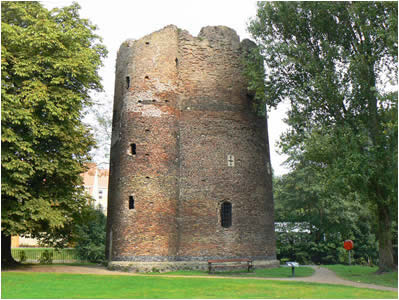
Click to view our Norwich picture tour |
| |
|
 |
Thetford Priory |
|
In the 13th century, worshippers at Thetford Priory were visited by the Virgin Mary. She guided them towards her statue, which turned out to be hollow. It concealed the holy relics of early saints. This momentous event was the catalyst that turned this into East Anglia's most important monastery. Pilgrims came in their hundreds. Unfortunately, even a site as holy as this couldn't survive Henry VIII's Dissolution of the Monasteries. The Priory has long since fallen into ruins, but the broken walls still trace out the floorplan of the church. |
|

Picture coming soon! |
| |
|
|
Binham's Benadictine monastery was one of the first religious institutions established in Norfolk after the Norman conquest. Much of it's in ruins, with the spectacular exception of the nave. Its beautiful, 13th century west front was repaired, its glass window was safely bricked up, and the whole thing was put into regular use as the local parish church. Inside is a horde of well-kept treasures: carvings, metalwork and a seven-sided font. Outside, grazing cows gather in the surrounding fields, gazing idly at the crumbling cloister walls. |
|
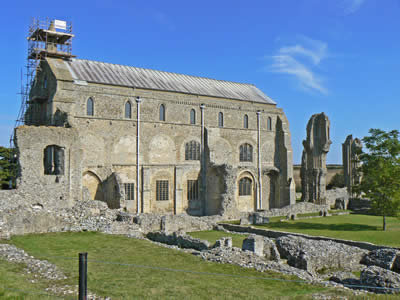
Click to view pictures of Binham Priory |
| |
|
 |
Castle Rising Castle |
|
In the 12th century, when William d'Aubigny married King Henry I's widow, he wanted to broadcast his new-found social status. He did so by constructing Castle Rising, which at the time was the largest building in England. Not satisfied, William renovated the entire landscape to suit his taste. Both the town and its surrounding deer park were arranged tidily in front of the windows of the great keep. The landscape has changed slightly since then, but the castle is in wonderful condition. The current manager is a descendent of William d'Aubigny. |
|
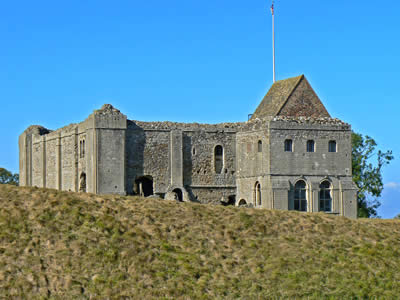
Castle Rising near King's Lynn |
| |
|
 |
Creake Abbey |
|
Many of Norfolk's religious buildings met their end during the Dissolution of the Monasteries. Creake Abbey, however, didn't make it that far; it was ravaged by fire and plague around the turn of the 16th century. It was left to slowly fall into ruins, but enough of the walls remain to imagine the ones that don't. It's easy to visualise where the various transepts and chapels were. Any visit to the abbey should also include a trip to the neighbouring farm centre, which has craft studios, a cafe and a regular farmer's market. |
|

Picture coming soon! |
| |
|
 |
Baconsthorpe Castle |
|
Baconsthorpe was built in the 1400s by the enterprising Heydon family. It grew as their wealth did, into a gigantic fortified mansion. The amount of protection they gave their home is perhaps evidence of how unpopular some of them were. There's a curtain wall, an inner and outer gatehouse, plus a 15-metre moat on three sides. The castle seems determined to isolate itself from the world. It's surrounded by nothing more than lawns and a lake - this is the middle of nowhere. It's at once beautiful and sinister. |
|
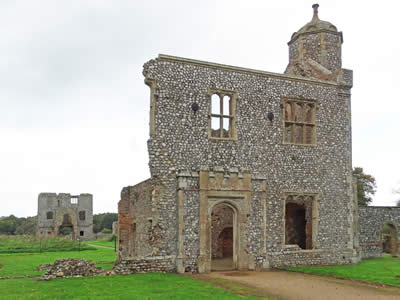
Click to view our Holt picture tour |
| |
|
|
In 3-4AD this was built as one of a chain of forts defending the south-east coast from North Sea raiders. There were towers for catapults, and plenty of room for cavalry to be garrisoned. Some of the walls are still standing, but others have long since slipped into the estuary at the castle's feet. This body of water has shrunk over the years. A trip to Burgh Ė a gradually eroding castle guarding a receding river Ė is a good illustration of East Anglia's constantly changing coastline. |
|
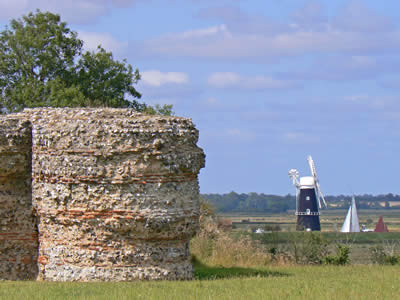
Click to view our Burgh Castle picture tour |
|
NORFOLK PICTURE TOURS |
|
|
|
|
|
|
|
MORE OF OUR WEBSITES |
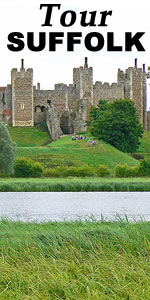 |
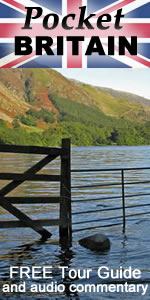 |
 |
| |
|

